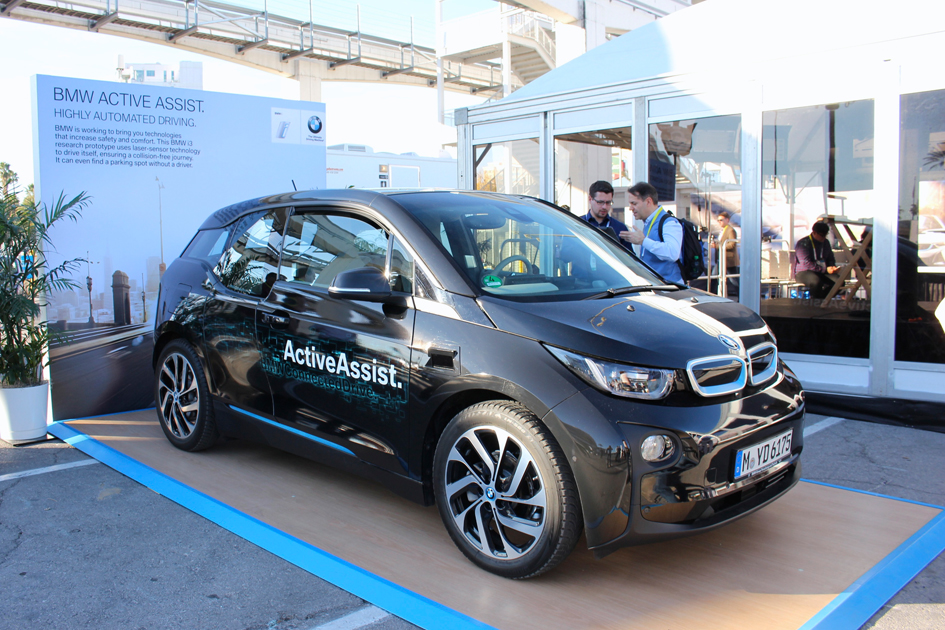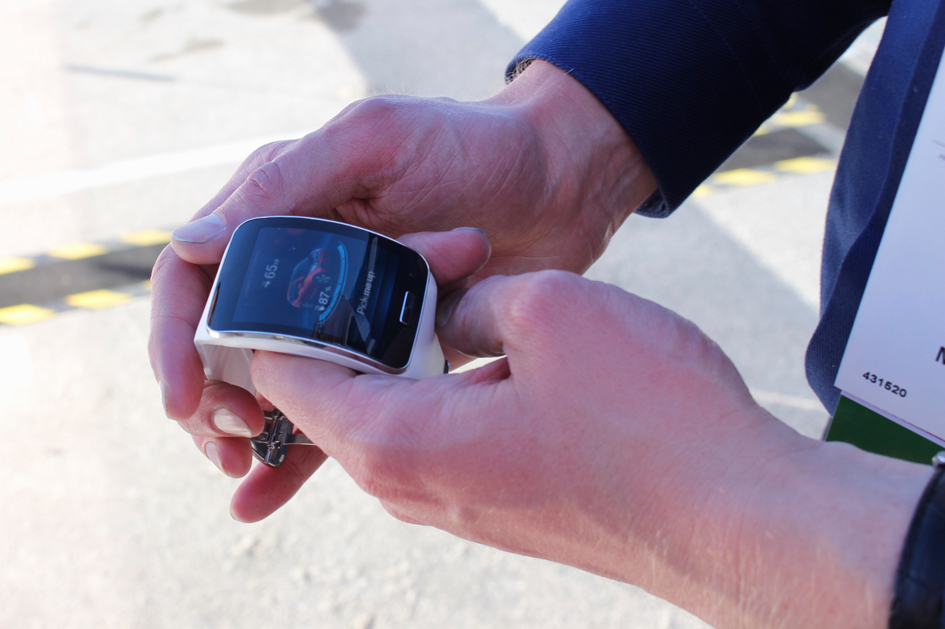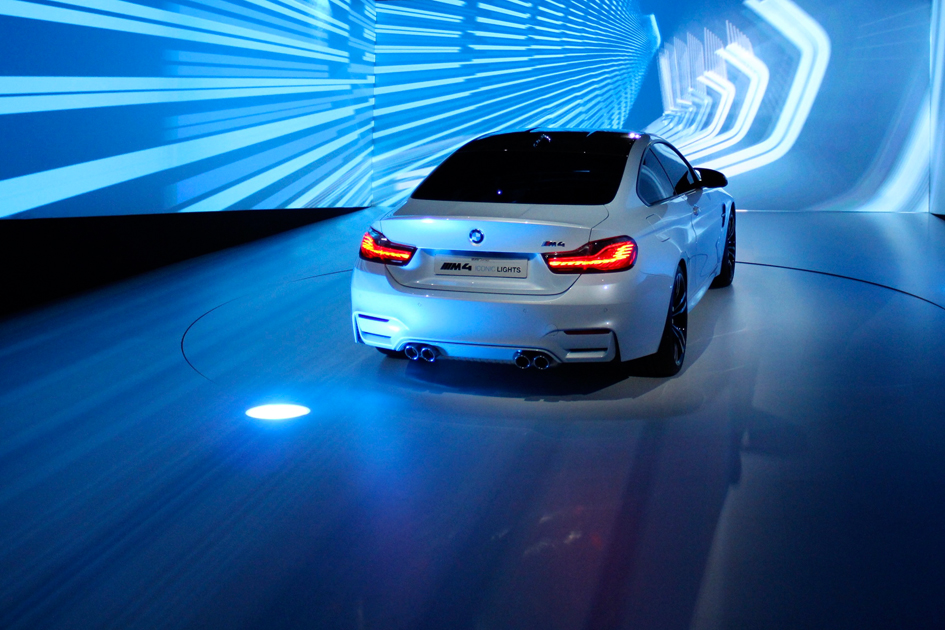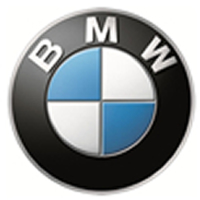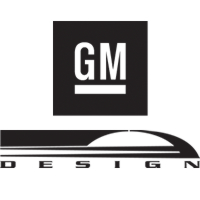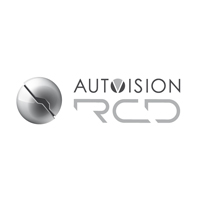Images and posting by John Grafman
BMW was quick to realize the importance of communication between vehicles, drivers and the environment and is today one of the world’s leading carmakers in the field of automotive connectivity. With BMW ConnectedDrive it offers both driver assistance systems and digital services aimed at enhancing safety and comfort. At the Consumer Electronics Show 2015 (CES, 6 – 9 January, Las Vegas), BMW will confirm and consolidate its status as a leading innovator in this field and as a premium mobility provider when it presents applications for new digital devices. It will also present new driver assistance systems and intelligent lighting technology at CES that will help to bring “Vision Zero” – the vision of accident-free personal mobility – a further step closer to reality.
Calendar and trip planning in one – the mobility planner. The BMW i3 already offers an innovative and unique intermodal routing system for urban navigation, incorporating various modes of transport – including local public transport. Even when drivers leave their BMW i3, the smartwatch or smartphone can display a list of possible public transport connections that will get them to their destination on time, or that will navigate them back to their vehicle. In Las Vegas, BMW Group Forschung und Technik – the Group’s R&D arm – are presenting a further enhanced version of this navigation service from BMW i Connected Mobility. A carfinder app is also integrated, which identifies the vehicle’s precise parking spot even in large multistory car parks. The application registers the vehicle’s position and relays it to the BMW backend servers. This position data can then be used to navigate the driver back to the vehicle. In addition to the smartphone and smartwatch, BMW i Connected Mobility also integrates a further device: the smart home TV. The internet-enabled TV is used as an input and display device and mobility centre.
BMW i Connected Mobility is able to detect – e.g. from the user’s digital calendar – if two appointments are in different geographical locations. The app calculates the time required to get from one location to the other and produces a precise and always up-to-the-minute mobility itinerary consisting of multiple individual trip modules. The system learns to select the types of transport the user prefers, thereby optimizing the recommendations it provides. The mobility planner, supported by the smartwatch or smartphone, navigates users promptly and punctually to their destination. The same route
information that is available on the smart home TV – including directions for navigation on foot to a car park or the nearest bus stop – can also be made available on mobile devices, for use en route. Using the mobility planner, the smart TV (or smartphone or smartwatch) can even provide a reminder function, letting the user know when to set off in order to arrive at the next appointment punctually. And because all devices are synchronized with the BMW backend, seamless connectivity between them is ensured at all times.
With the BMW i Remote App for Android, BMW is the first vehicle manufacturer in the world to offer – in the BMW i3 – smartwatch control of vehicle functions as a standard feature. And with BMW i Connected Mobility, further possibilities are being opened up – for example a research application has been developed where the smartwatch also allows the BMW i3’s doors to be unlocked by gesture control. If desired, the doors can also be automatically opened and closed when the user, wearing the smartwatch, is approaching or moving away from the vehicle. This is an application that can significantly enhance comfort and convenience not only in the private sphere but also when using the BMW car-sharing programme DriveNow.
360-degree collision avoidance – the next stage in “Vision Zero”. Collision avoidance is a vital feature for moving towards accident-free personal mobility. The BMW Group has been working to implement this vision for many years. Assistance systems like Active Cruise Control with Stop & Go function, which detects and responds to preceding vehicles, are already fitted in current BMW models. These radar- and camera-based systems provide warnings and can also brake the vehicle to a standstill, if necessary. In the new research vehicle – a BMW i3 – an innovative laser sensor system scans the entire area around the vehicle. In a potential collision situation, the system warns the driver and if necessary automatically initiates centimeter-accurate braking.
Fully automated parking in multistory car parks – quick and safe, even without a driver. Four laser scanners monitor the entire area around the research vehicle, producing a precise image of its environment. A fully automated Remote Valet Parking Assistant integrates this information with the digital plan of a car park, and then uses this data to drive the BMW i3 autonomously, quickly and safely to a vacant space and park it there. When the driver is ready to set off again, he can summon the vehicle, for example by a voice command directed at the smartwatch, and the BMW i3 will return promptly to the car park exit, ready for departure.
Extended control options with touch control and non-contact gesture recognition. The rapid proliferation of smartphones and tablet computers has made direct inputting of data on touch-sensitive interfaces a familiar feature of everyday life. A similar user experience in future BMW models will be offered by a touchscreen Control Display. The Control Display and the proven iDrive Controller will then have equal status. In a further development, it will also be possible in future models to conveniently perform various functions – such as inputting one’s home address in the navigation system – by performing a directed gesture in the area between the gear lever and the instrument panel.
Touch Command – extended control options in the rear. Touch Command is an example of how quickly BMW responds to new developments in the consumer electronics sector. The system uses a standard Samsung tablet computer as a control interface for infotainment and comfort functions, allowing the latest devices with new, intelligent functionality to be seamlessly integrated into the vehicle. The tablet connects wirelessly to the onboard electronics, allowing this interface to be used conveniently in the rear of the vehicle as well, for example to control the rear seat entertainment system. All the main functions appear on the tablet display, without interfering with the monitor displays.
Better parking with ParkNow. Personal mobility in cities requires intelligent solutions. ParkNow helps with parking problems by offering convenient PC- or smartphone-app-based assistance when searching for vacant parking spaces in multistory car parks. It will soon be possible to use this app with full functionality from inside the vehicle as well, and to operate it intuitively with the iDrive Controller. The app will be integrated into the vehicle using the innovative A4A (Apps for Automotive) interface. Also, thanks to its cooperation with Parkmobile, ParkNow will soon be offering additional functions. For example, the ParkNow app will offer users a convenient means of payment at parking meters or ticket machines in public car parks. A reminder function warns the driver when the allotted parking time is running out, helping drivers to avoid parking fines.
The BMW Group multifunctional credit card. The new-generation BMW Group MasterCard credit cards will make it possible to simplify use of the DriveNow fleet even further. The card is fitted with a chip that supports Near Field Communication (NFC – a wireless standard for short-range data transmission). The credit card then becomes not just a means of cashless payment but also a remote key. As soon as the card is held near to the sensor in the windscreen, the system identifies the user and unlocks the vehicle.
Wireless charging of high-voltage batteries. Optimal charging of electric vehicles and plug-in hybrid models helps to improve their sustainability. With a research application, the BMW Group is demonstrating a solution, which would allow EV batteries to be charged even more conveniently in future using wireless, inductive charging. The system consists of two coils, one on the underside of the vehicle and one on the floor of the garage. Current is transmitted between the coils by means of an alternating magnetic field and without cable or contacts, at a charge rate of 3.3 kW. The battery of the BMW i8 takes about 2 hours to recharge in this way. This is similar to the charging time achieved with a wired connection. The system launches automatically, but only if the coils are correctly aligned and there is nothing in the way to obstruct the energy transfer. Incidentally, even right next to the vehicle, the amount of electromagnetic radiation released is less than that emitted by an induction hotplate on a stove in a kitchen in the home.
BMW i ChargeForward Program: intelligent charging to reduce overall running costs for EVs. As a leading innovator in the field of electric mobility, BMW looks for opportunities to positively impact the future of mobility in ways that extend its commitment to sustainability while also focusing on total cost of vehicle ownership for the consumer. With the BMW i ChargeForward Program, it is exploring the possibilities for ensuring that recharging of the BMW i3’s batteries does not create an additional burden on the grid during peak periods. This pilot project, which will be launched in the Greater San Francisco area in July 2015, will investigate the charging behavior and driving habits of 100 BMW i3 drivers over a period of 18 months. All participants receive a financial bonus at the beginning and end of the scheme. Connected to the smart charging system, the batteries will be charged intelligently at an ideal time within the overall window the vehicle spends plugged into a domestic charging system, such as the BMW i Wallbox. The mobility requirements of individual participants are taken into account and, if desired, participants can opt out for a day at a time. A portion of the benefits for the entire network that arise from the scheme (increased reliability) is passed on to BMW i3 owners or participants in the form of bonuses. That means a reduction in total running costs for the electric vehicle. At the same time BMW i ChargeForward is exploring how batteries from used BMW EVs such as the MINI E can serve as stationary energy buffers, for example to absorb peaks in renewable energy supply. With BMW i ChargeForward, BMW i reinforcing its espousal of sustainability beyond
With BMW i ChargeForward, BMW i reinforcing its espousal of sustainability beyond the entire life cycle of the product and reducing overall running costs for EVs, since savings made by the electricity providers can be passed on to customers.
Over-the-air navigation map updates. BMW ConnectedDrive features offer even greater convenience: the latest-generation Navigation system Professional now enables over-the-air updating of map data for the first time. The maps are brought up to date – at no charge to the user – via a mobile phone connection through the SIM card embedded in the car.
BMW ConnectedDrive Store also available in the USA in spring 2015. Accessing the extensive range of digital services and features from BMW ConnectedDrive has now become even easier and more convenient. As well as being able to order them online from your home or office, customers can now also book intelligent services such as the Concierge Service and Real Time Traffic Information (RTTI) from the car via a connected SIM card – thanks to the new BMW ConnectedDrive Store. The services are ready to use within minutes. BMW is the only premium carmaker to offer this additional means of acquisition. Following its successful introduction in Belgium, Luxembourg and Germany, the BMW ConnectedDrive Store will also be launched in the USA from spring 2015.
BMW M4 Concept Iconic Lights showcases BMW laser lighting of the future and OLED rear lights. In June 2014, BMW was the world’s first manufacturer to supply to customers a standard-production vehicle with laser lighting – the BMW i8. Equipped with intelligent laser lighting and OLED-based BMW Organic Light, the BMW M4 Concept Iconic Lights model on show at CES 2015 in Las Vegas highlights BMW’s position as a technology leader. The concept model combines pioneering lighting design with the latest technology.
BMW laser lights offer an impressively long beam range well in excess of other lighting systems. The light is brighter, casts a concentrated beam over a distance of up to 600 meters and is extremely efficient. Upwards of a speed of 70 km/h (43.5 mph), BMW laser lights are automatically activated on top of the broader-dispersion LED main beam. Innovations now being unveiled with BMW M4 Concept Iconic Lights are yet again helping BMW to widen its lead as a technology innovator.
In combination with BMW Selective Beam, BMW laser lighting provides optimal vision without dazzling oncoming or preceding vehicles. Extensive integration between the headlights, camera, sensors and navigation systems is allowing new, proactive light functions to be developed. For example, if the vehicle sensors detect that the clear road width ahead is reduced, the laser beams can be activated to give drivers an indication of the width of their BMW Media information 01/2015 Page 8
vehicle in relation to the road. BMW M4 Concept Iconic Lights also works with the navigation system to illuminate corners well in advance. The Dynamic Light Spot with laser technology detects people or animals on the road or at the roadside from a distance of up to 100 meters, and flashes to alert the driver.
OLED-based BMW Organic Light uses elements which are just 1.4 millimeters thick. Their semiconducting layers of organic material produce light uniformly over their entire surface. In the past, legal requirements regulating the brightness of vehicle lighting have restricted the use of OLEDs on the exterior of the vehicle. However, with BMW M4 Concept Iconic Lights, rear light clusters have been developed which for the first time include not only OLED taillights but also OLED direction indicators. Since the OLEDs can be activated individually, this creates new possibilities for using different styles of lighting at different times, for example in different driving modes. The front and rear lights of the BMW M4 Concept Iconic Lights model preview a number of lighting functions that can potentially be used in future production vehicles. Rear light clusters featuring BMW Organic Light will already be making their debut on a future vehicle of BMW M GmbH within the next 15 months.
Key fob with display – premium door opener and innovative display functions. An innovative ultra-modern key fob with display combines the convenience functions of a remote key – locking, unlocking and failsafe identification when starting the vehicle – with unique status displays. A 2.2-inch high-resolution LCD display shows whether the doors and windows are locked and allows the battery charge status to be checked, for example on the innovative BMW i8 plug-in hybrid sports car.





